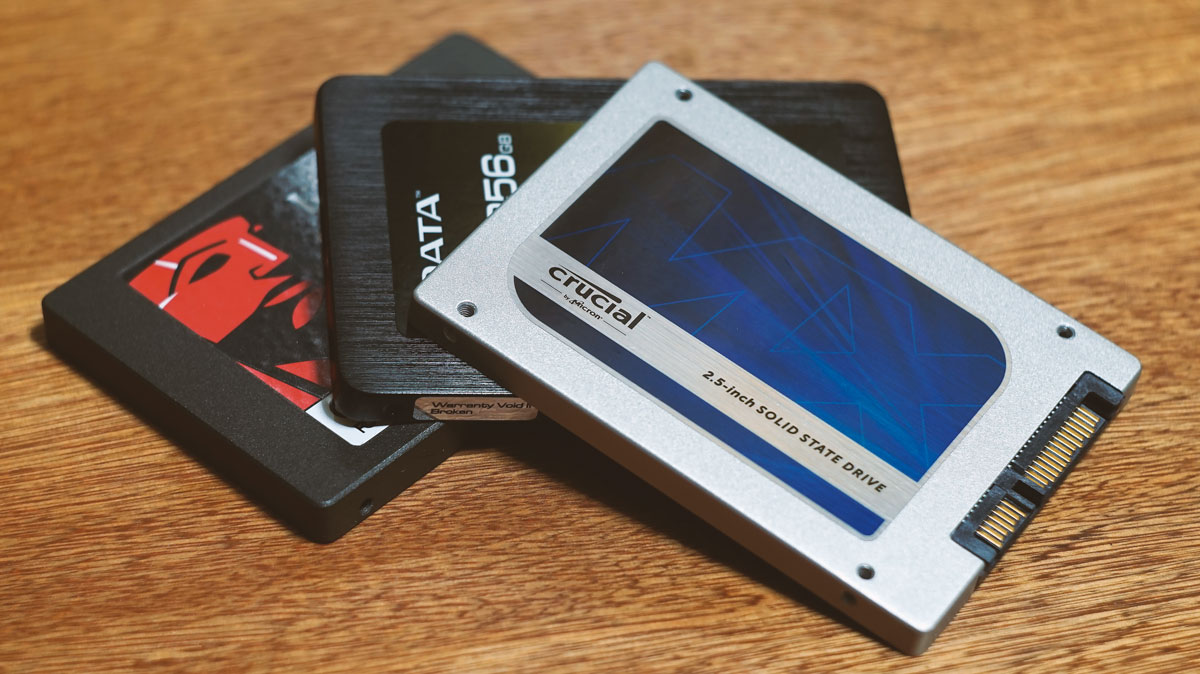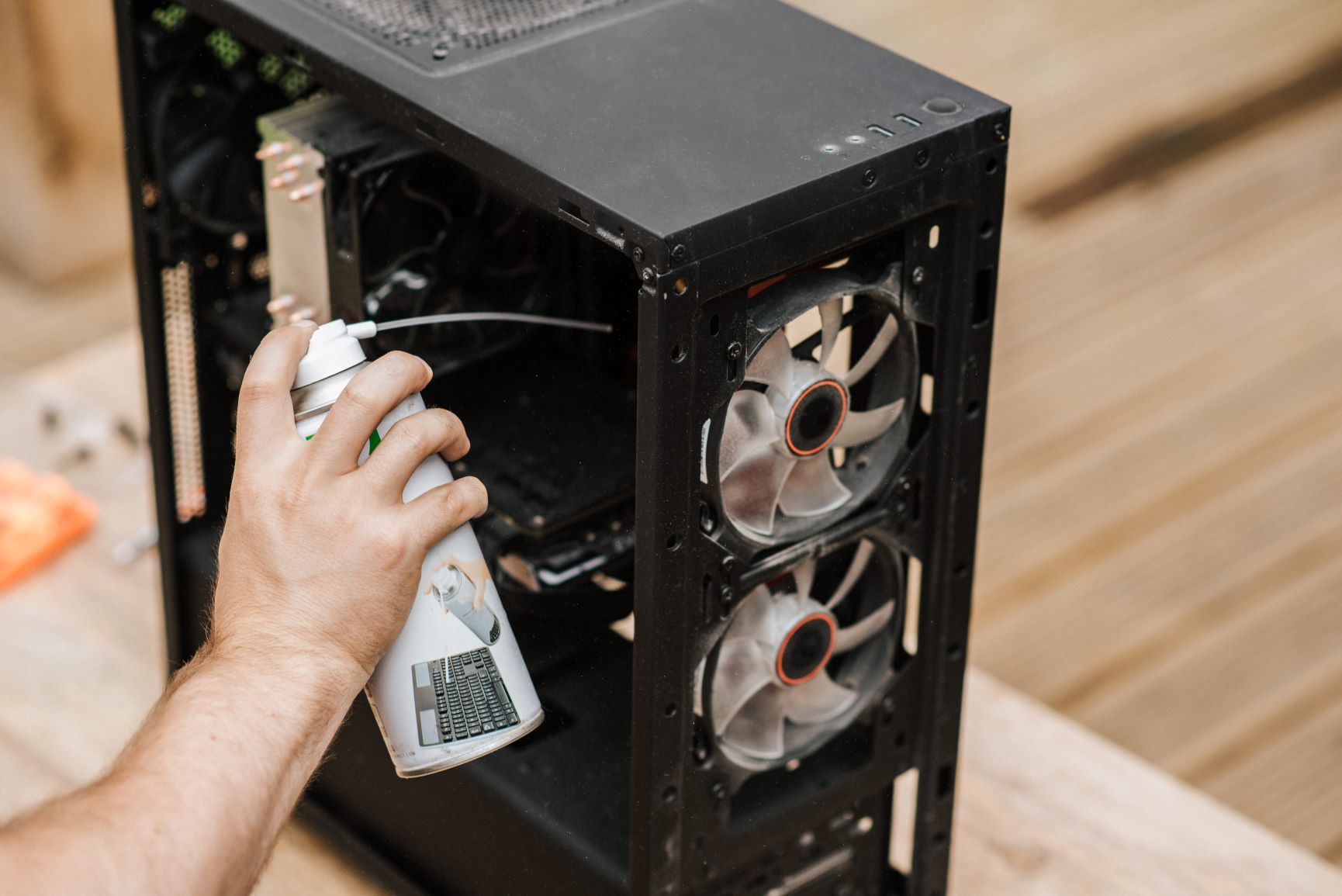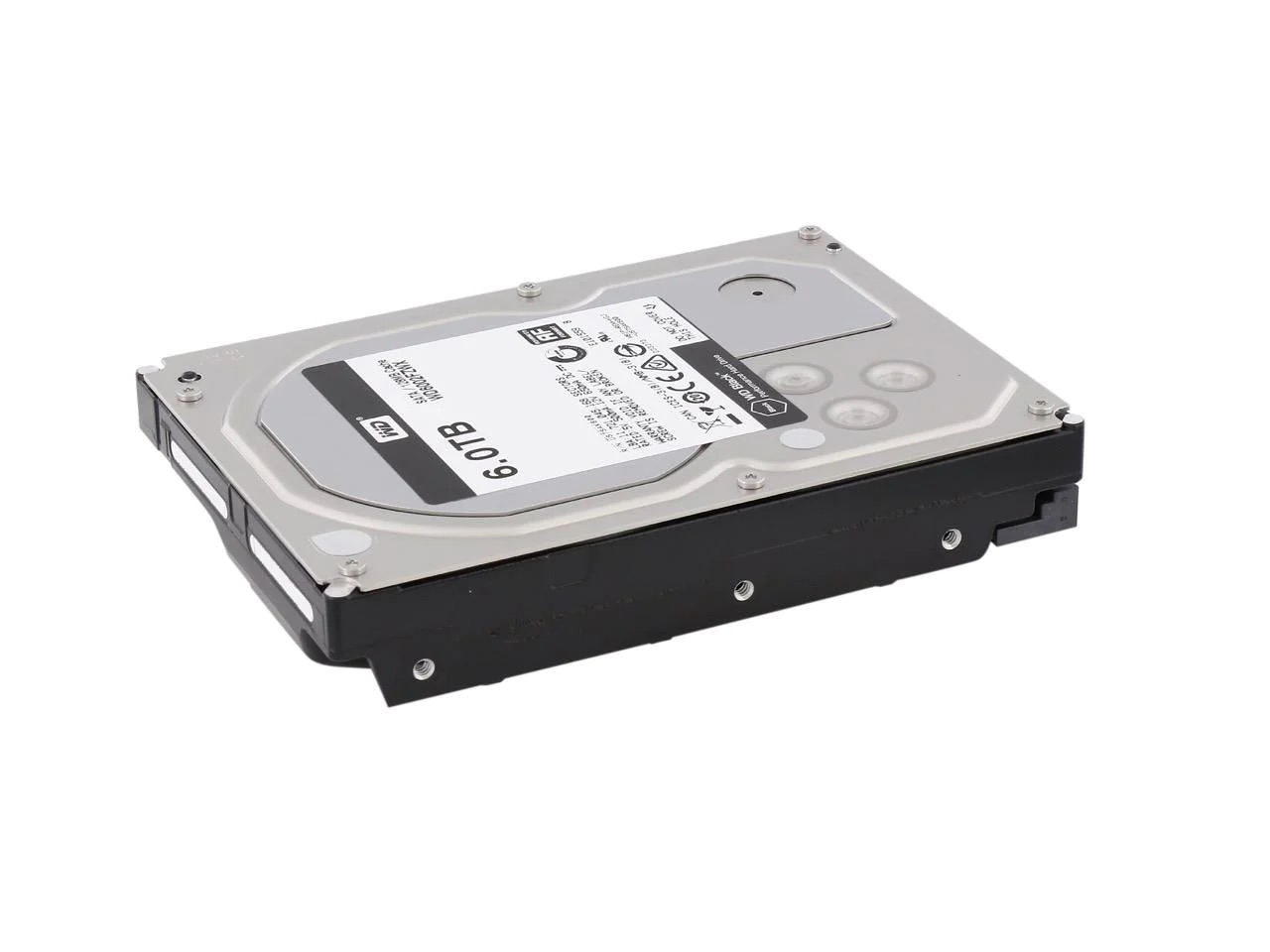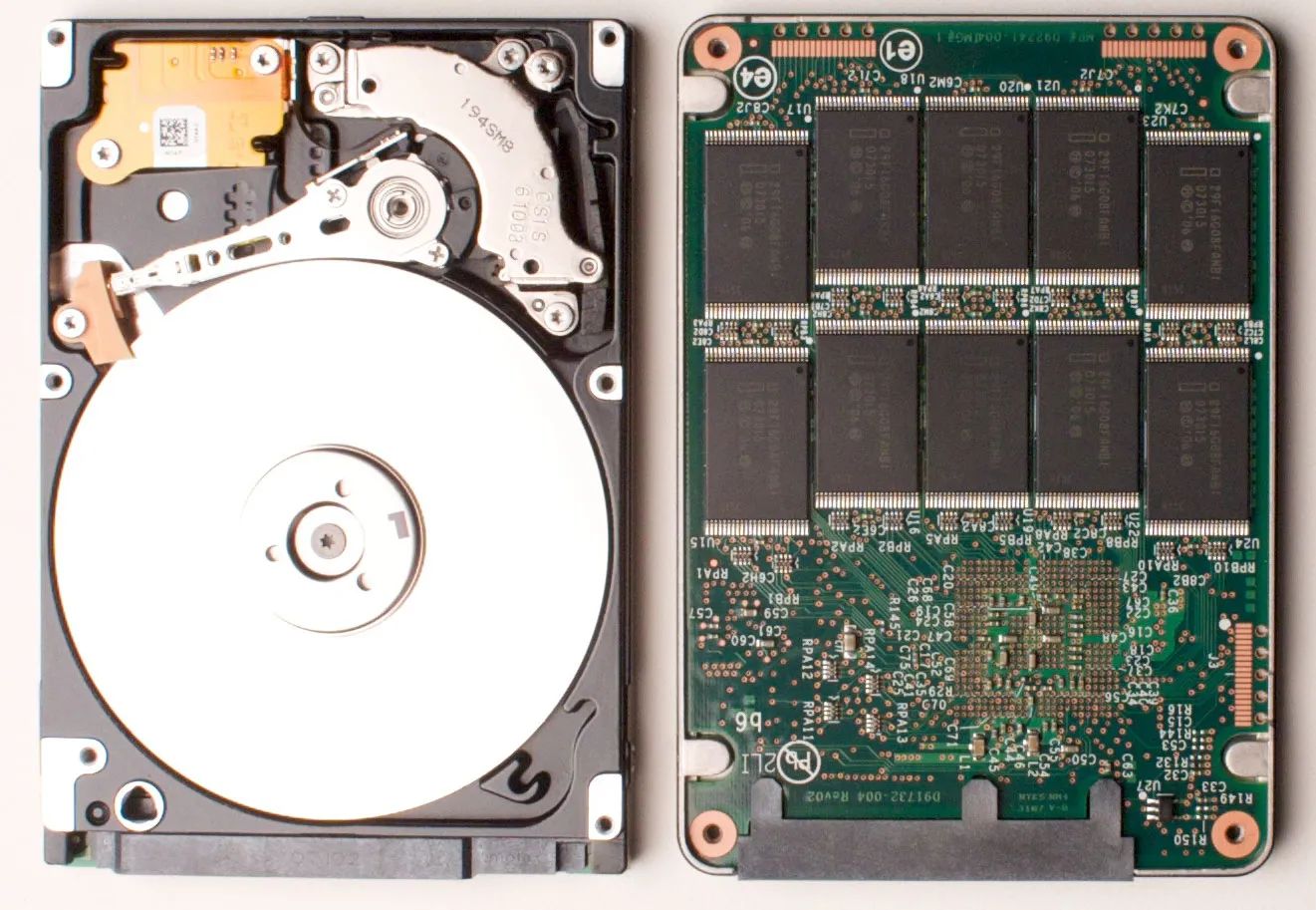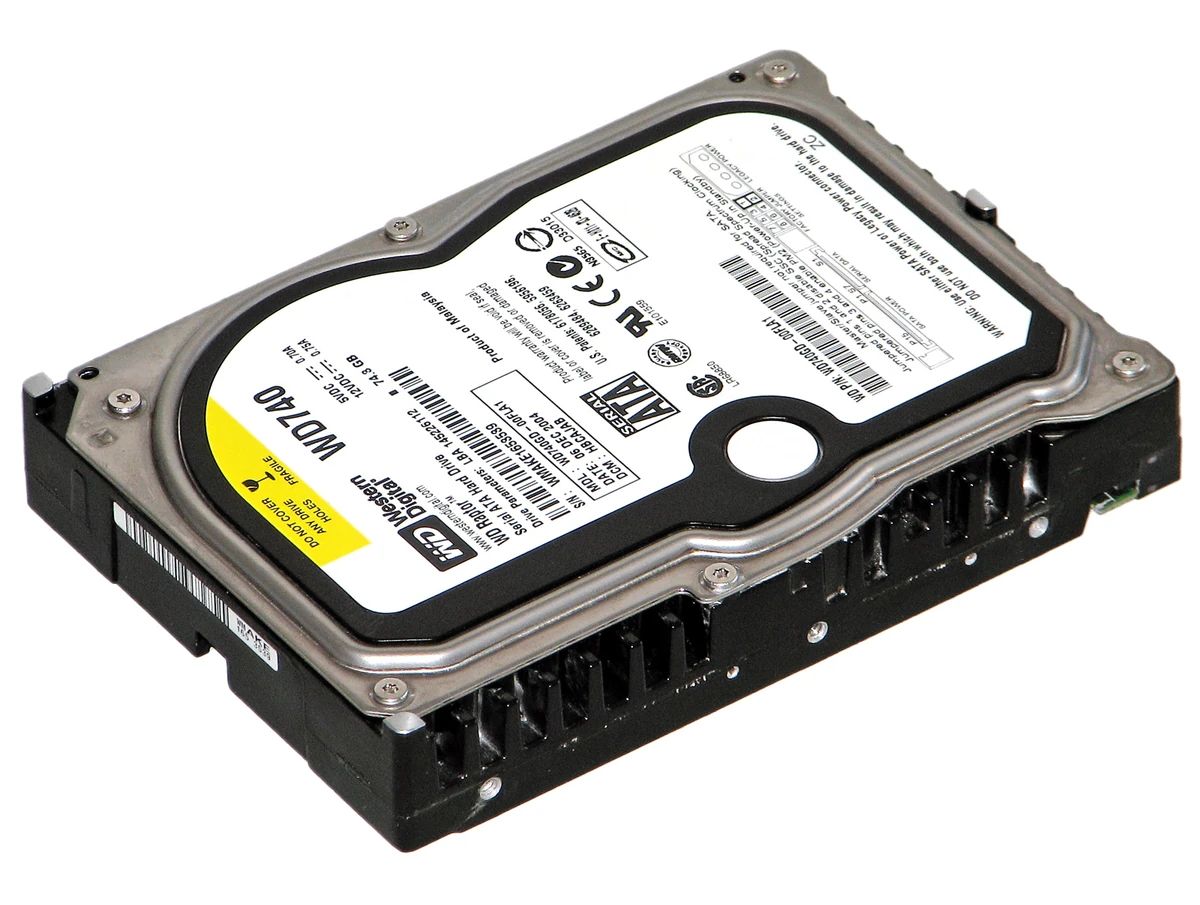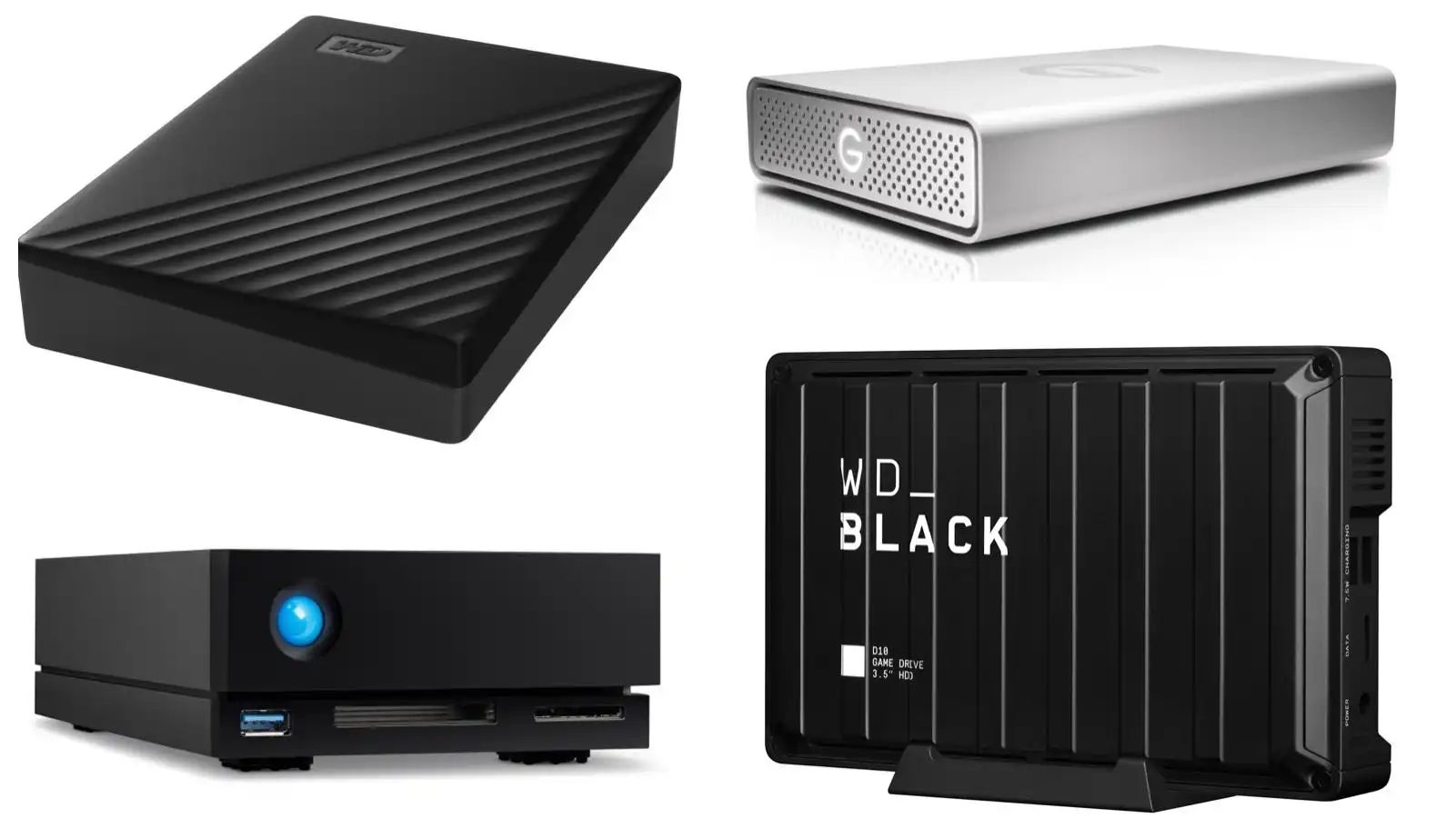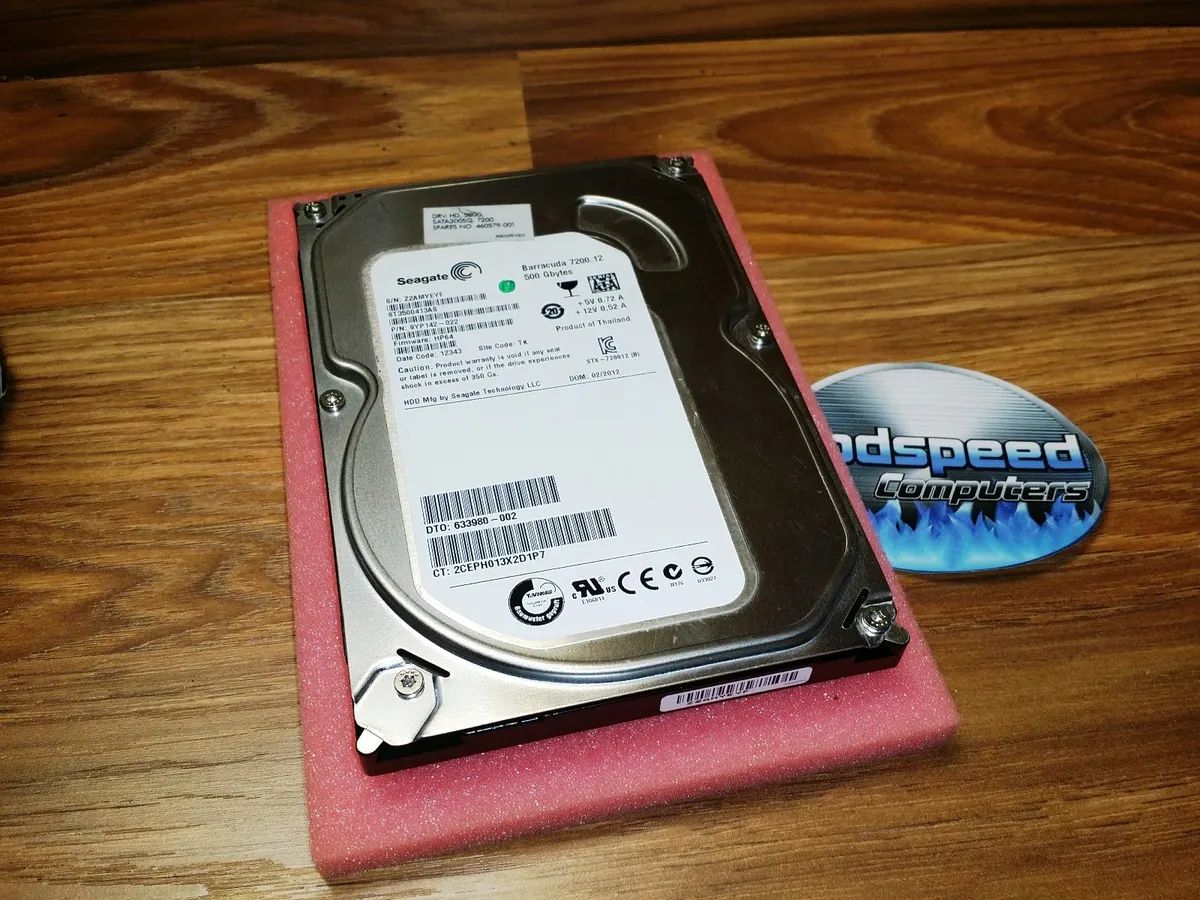Introduction
Data scrubbing, also known as data sanitization or data erasure, is the process of securely removing or destroying data stored on a hard disk drive (HDD) or other storage media. It is essential for protecting sensitive information and ensuring that it cannot be recovered by unauthorized individuals. Data scrubbing goes beyond simply deleting files or formatting a hard drive; it involves using specialized techniques to overwrite or eliminate data completely.
With the increasing prevalence of data breaches and the growing emphasis on data privacy, properly scrubbing data from HDDs has become a critical aspect of information security. Whether you are upgrading to a new computer, decommissioning old equipment, or disposing of electronics, it is vital to ensure that the data they contain is permanently eradicated.
In this article, we will explore the various methods of data scrubbing, their advantages and limitations, and the considerations one should take into account before implementing them. By understanding the available options and best practices, you can make informed decisions to safeguard sensitive data and prevent unauthorized access to it.
What is data scrubbing?
Data scrubbing, also referred to as data sanitization or data erasure, is the process of permanently removing data stored on a hard disk drive (HDD) or other storage media. It ensures that the data cannot be recovered through any means, thus protecting sensitive information from falling into the wrong hands.
Deleting a file from your computer does not actually remove the data from the hard drive; rather, it simply marks the space occupied by the file as available for reuse. Until that space is overwritten with new data, the original file remains intact and potentially recoverable. Data scrubbing, on the other hand, involves overwriting or eliminating data in a way that makes it virtually impossible to recover.
Data scrubbing is not limited to just individual files or specific directories. It involves erasing all traces of data, including system configurations, operating system files, application data, and user-generated files. By scrubbing the entire disk, you can ensure that any sensitive information, such as personal documents, financial data, or proprietary business information, is permanently and irretrievably removed.
Furthermore, data scrubbing can be performed on various storage media, including not only HDDs but also solid-state drives (SSDs), USB flash drives, and even virtualized storage technologies. Regardless of the type of storage media, the goal of data scrubbing remains the same: to render the data unreadable and unrecoverable.
Data scrubbing is a vital aspect of data privacy and security, particularly in industries such as healthcare, finance, and government, where protecting sensitive information is paramount. Additionally, organizations that handle customer data or have legal obligations to safeguard personal information must adhere to industry regulations and standards, such as the General Data Protection Regulation (GDPR) or the Health Insurance Portability and Accountability Act (HIPAA).
In the next section, we will explore why data scrubbing is necessary and the potential risks of neglecting this critical process.
Why is data scrubbing necessary?
Data scrubbing is necessary to protect sensitive information and mitigate the risks of data breaches. When data is not properly scrubbed, it can be recovered and accessed by unauthorized individuals, posing significant security and privacy threats.
One of the primary reasons why data scrubbing is necessary is to comply with industry regulations and legal requirements. Many industries, such as healthcare, financial services, and government, have specific regulations in place to protect sensitive data. Failing to scrub data properly can result in non-compliance and potential legal consequences, including fines and reputation damage.
Another important reason for data scrubbing is the prevention of identity theft. Personal information, such as social security numbers, dates of birth, and financial details, can be stored on hard drives or other storage media. If this data is not scrubbed, it can be recovered and used by identity thieves to perpetrate fraud and other cybercrimes.
Data scrubbing is also crucial when decommissioning or disposing of old equipment. Simply discarding or selling used computers or storage devices without properly scrubbing the data leaves it vulnerable to unauthorized access. Even if you reformat the hard drive or delete files, data recovery techniques can still potentially retrieve sensitive information.
Moreover, businesses and organizations need to protect their intellectual property and proprietary data. Unscrubbed data on discarded or sold devices can be retrieved by competitors, leading to loss of trade secrets, legal disputes, or compromised business strategies.
Finally, data scrubbing helps prevent the accidental exposure of sensitive information. When reusing or repurposing storage devices within an organization, data that was intended to be deleted can still be present, posing a risk if the device falls into the wrong hands or is accessed by unauthorized personnel.
By implementing data scrubbing processes, organizations can ensure compliance, minimize the risk of data breaches, protect personal and proprietary information, and maintain the trust of customers and stakeholders.
In the next section, we will explore the different methods of data scrubbing and their respective advantages and limitations.
Methods of data scrubbing
There are several methods available for data scrubbing, each with its own advantages and limitations. The choice of method depends on factors such as the type of storage media, the level of data sensitivity, and the resources available. Below are four common methods of data scrubbing:
1. Overwriting
One of the most widely used methods of data scrubbing is overwriting, where new data is written over the existing data on the hard drive. Multiple passes of data overwriting can make the original data virtually impossible to recover. Different algorithms, such as the Gutmann method or the DoD 5220.22-M standard, dictate the patterns and number of passes.
This method is effective and can be performed using specialized software or built-in operating system functions. However, it can be time-consuming, especially for large storage devices, and may require technical expertise.
2. Degaussing
Degaussing is a method that uses a strong magnetic field to demagnetize the storage media, rendering the data unreadable. This method is primarily employed for magnetic storage media like hard disk drives and magnetic tapes.
By subjecting the storage media to a powerful electromagnetic field, degaussing erases the existing data, making it nearly impossible to recover. It is a quick and efficient method, but it is not suitable for solid-state drives (SSDs) or flash-based storage devices.
3. Physical destruction
Physical destruction involves physically destroying the storage media to render the data irretrievable. Methods include shredding, incineration, pulverization, or disintegration. This method is commonly used when disposing of storage devices that are no longer usable or when high levels of security are required.
Physical destruction guarantees that the data is completely destroyed, leaving no chance of recovery. However, it may not be suitable if the storage device is intended for reuse or if there are environmental concerns regarding the disposal of electronic waste.
4. Disk wiping software
Disk wiping software is specifically designed to scrub data from hard drives, solid-state drives, and other storage media. It overwrites the existing data with a series of random or specific patterns to ensure complete data destruction.
This method is relatively easy to use, cost-effective, and allows for the reuse of the storage media. However, it requires careful selection of reliable software and thorough verification of the data scrubbing process.
Ultimately, the choice of data scrubbing method depends on the specific requirements of the organization or individual. Considerations such as data sensitivity, resources, time constraints, and environmental impact should guide the selection of the most appropriate method.
In the next section, we will discuss the factors to consider when choosing the right method for data scrubbing.
Overwriting
Overwriting is a popular method of data scrubbing that involves writing new data over the existing data on a hard disk drive (HDD) or other storage media. By repeatedly overwriting the data, it becomes extremely difficult or even impossible to recover the original information.
There are different algorithms and standards that dictate the number of passes and patterns used for overwriting. The Gutmann method, for example, suggests 35 passes, while the U.S. Department of Defense (DoD) 5220.22-M standard recommends three passes.
Overwriting can be performed using specialized software or built-in functions provided by operating systems. In general, the more passes performed, the more secure the scrubbing process becomes. However, it’s important to note that modern hard drives often have built-in secure erase functions that can perform satisfactory overwriting in a shorter timeframe.
One advantage of overwriting is that it allows for the reuse of the storage media, making it a cost-effective method. It also provides a high level of security, as the overwritten data is difficult to recover using standard data recovery methods.
However, overwriting can be a time-consuming process, especially for large storage devices or when performing multiple passes. It may also require technical expertise to ensure that the data is properly overwritten. Additionally, overwriting may not be effective on certain types of storage media, such as solid-state drives (SSDs), due to specific wear-leveling algorithms that distribute data across the drive.
To ensure the effectiveness of overwriting, it is important to use reliable data scrubbing software or built-in functions provided by the operating system. After performing the overwriting process, it is recommended to verify that the data has been successfully erased by using data recovery tools to attempt data retrieval.
Overall, overwriting is a widely used method of data scrubbing that provides a level of security by writing new data over the existing data. Though it may have limitations, such as time constraints and compatibility with certain storage media, it is a cost-effective option for securely erasing data.
In the next section, we will discuss another method of data scrubbing: degaussing.
Degaussing
Degaussing is a method of data scrubbing that involves using a strong magnetic field to disrupt the magnetic properties of a storage medium, rendering the data unreadable. This method is primarily used for magnetic storage media, such as hard disk drives (HDDs) and magnetic tapes.
The process of degaussing involves subjecting the storage media to a powerful electromagnetic field that effectively erases the data by demagnetizing the magnetic particles on the surface of the disk. This disrupts the alignment of the particles, making it nearly impossible to recover the original information.
One of the advantages of degaussing is its speed and efficiency. It can quickly and effectively erase data from storage media, making it an attractive option for organizations that need to sanitize large quantities of data quickly.
However, it’s important to note that degaussing is not suitable for all types of storage media. It is primarily designed for magnetic storage devices and is not effective for solid-state drives (SSDs), flash drives, or other non-magnetic media. This is because SSDs use electronic chips to store data, rather than magnetic particles, so degaussing has no effect on them.
Furthermore, degaussing is a one-time process. Once data is degaussed, it cannot be recovered. This can be advantageous in terms of data security but may also pose challenges if there is a need to selectively delete only parts of the data while preserving other information on the same storage media.
When performing degaussing, it is crucial to use professional-grade degaussing equipment that generates a field with sufficient strength to effectively erase the data. It is also important to follow proper guidelines and safety procedures to protect individuals and equipment from the potentially harmful effects of strong electromagnetic fields.
Moreover, before degaussing, it is essential to ensure that any data that needs to be preserved is properly backed up or transferred to other storage media. Once data is degaussed, it cannot be recovered, so it’s important to take necessary precautions to prevent the loss of any valuable or important information.
In summary, degaussing is a method of data scrubbing that uses a strong magnetic field to erase data from magnetic storage media. It is a quick and efficient method, but it is important to note that it is only effective for magnetic media and cannot be used on non-magnetic devices like SSDs or flash drives.
In the next section, we will explore the method of physical destruction as a means of data scrubbing.
Physical Destruction
Physical destruction is a method of data scrubbing that involves physically damaging or destroying the storage media to render the data irretrievable. This method ensures that the data is completely and permanently destroyed, leaving no chance for recovery.
There are several methods of physical destruction that can be employed, depending on the type of storage media and the level of security required. These methods include shredding, incineration, pulverization, and disintegration.
Shredding: This method involves using specialized equipment to shred the storage media into small pieces, rendering the data unreadable. Industrial shredders are capable of reducing hard drives and other media to small fragments, ensuring complete destruction of the data.
Incineration: Incineration involves subjecting the storage media to high temperatures, effectively burning it to ashes. This method completely destroys the physical components of the storage media, making data recovery impossible.
Pulverization: Pulverization is a method that crushes the storage media into small particles, making data extraction incredibly difficult or impossible. This is often done using mechanical equipment designed for this purpose.
Disintegration: Disintegration is a method that uses powerful machinery to break down the storage media into fine particles or dust, ensuring that the data is completely destroyed and cannot be recovered.
Physical destruction offers a high level of security since it ensures the complete destruction of the storage media. This method is particularly suitable for situations where the storage media is no longer usable or when strong data security measures are required.
However, it’s important to consider potential environmental concerns when opting for physical destruction. Proper disposal methods must be employed to minimize the impact on the environment and comply with regulations regarding electronic waste disposal.
Physical destruction may not be suitable for situations where reusability of the storage media is desired, as it permanently renders the device unusable. Additionally, the cost and logistics of implementing physical destruction methods should be taken into consideration, as specialized equipment or services may be required.
Before implementing physical destruction, it’s important to ensure that any valuable or important data has been appropriately backed up or transferred to other secure storage media. Once the physical destruction process is complete, the data is irretrievable.
In summary, physical destruction is a highly effective method of data scrubbing that involves physically damaging or destroying the storage media to ensure the complete and irreversible destruction of data. It offers a high level of security but may not be suitable for situations where reusability of the storage media is desired.
In the next section, we will explore the method of disk wiping software as a means of data scrubbing.
Disk wiping software
Disk wiping software is a method of data scrubbing that utilizes specialized software designed to overwrite data on a storage device, ensuring that the original information is permanently erased and cannot be recovered. This method is commonly used for hard disk drives (HDDs), solid-state drives (SSDs), and other types of storage media.
Disk wiping software works by overwriting the existing data with random or specific patterns of data. This process is typically performed multiple times to ensure that the data is thoroughly scrubbed. The number of passes and the specific patterns used can vary depending on the software and the level of security required.
One of the advantages of using disk wiping software is its ease of use. Many software programs offer a user-friendly interface that guides the user through the process, making it accessible to individuals without extensive technical knowledge. Disk wiping software also allows for customization, allowing users to choose the number of passes and the specific wiping patterns according to their needs.
Furthermore, disk wiping software is cost-effective as it does not require specialized equipment or physical destruction of the storage media. It also has the advantage of allowing for the reuse of the storage device after the scrubbing process is complete, making it an environmentally friendly option.
It’s important to note that when using disk wiping software, it is crucial to select a reliable and reputable program. There are various commercial and open-source options available, each with its own features and capabilities. It is recommended to choose software that has been independently verified and tested for its effectiveness in scrubbing data.
Additionally, users should take precautions to ensure that the disk wiping process is thorough and complete. It is advisable to perform verification checks after the wiping process to confirm that the data has been properly erased. Furthermore, if the storage device is to be reused or disposed of, it’s essential to securely erase the boot sectors and system files to prevent any residual traces of data.
While disk wiping software is generally effective, it’s important to understand its limitations. Some storage devices, particularly SSDs, may have built-in features that render the wiping process less effective due to wear-leveling algorithms. In such cases, it may be necessary to use specialized software designed specifically for SSDs.
In summary, disk wiping software is a versatile and accessible method of data scrubbing that allows for the secure erasure of data on storage devices. It offers customization, cost-effectiveness, and the potential for reusing the storage media. However, it is essential to choose reliable software and follow proper procedures to ensure thorough data scrubbing.
In the next section, we will discuss the considerations to keep in mind when choosing the right method for data scrubbing.
Choosing the right method for data scrubbing
When it comes to data scrubbing, selecting the right method is crucial to ensure the complete and secure erase of sensitive information. Several factors should be taken into consideration when choosing the appropriate method for data scrubbing:
1. Type of storage media: Different methods are suitable for different types of storage media. For instance, overwriting and disk wiping software are effective for hard disk drives (HDDs), while degaussing is more suitable for magnetic media. Solid-state drives (SSDs) may require specialized software designed specifically for scrubbing SSDs.
2. Level of data sensitivity: The sensitivity of the data being stored should be a determining factor in selecting the method of data scrubbing. Highly sensitive or classified information may require more stringent methods like physical destruction, while less sensitive data may be adequately scrubbed using software-based methods.
3. Reusability of the storage media: Consider whether the storage device is intended for reuse or disposal. Disk wiping software offers the advantage of allowing for the reuse of the storage media, while physical destruction renders the device permanently unusable.
4. Compliance requirements: Depending on the industry or geographical location, there may be specific compliance requirements regarding data sanitization. It is important to ensure that the chosen method aligns with these regulations and standards.
5. Resources and expertise: Evaluate the resources and technical expertise available to perform the data scrubbing process. Physical destruction may require specialized equipment or services, while disk wiping software may require understanding and proficiency in using the software.
6. Environmental considerations: Keep in mind the environmental impact when selecting a method of data scrubbing. Physical destruction methods can generate electronic waste, while other methods like overwriting and disk wiping have less environmental impact.
7. Verification process: Consider whether the method provides a reliable way to verify the success of the data scrubbing process. Verification checks, such as using data recovery tools to attempt data retrieval, can help ensure that the data has been properly erased regardless of the chosen method.
It is important to assess the specific requirements and constraints of your situation to determine the most appropriate method of data scrubbing. In some cases, a combination of methods may be necessary to achieve the desired level of data security. Consulting with experts in the field can also provide valuable insights and guidance in choosing the right method.
In the next section, we will discuss the considerations and best practices to keep in mind before implementing data scrubbing.
Considerations before data scrubbing
Before implementing data scrubbing, it is essential to consider several factors to ensure that the process is effective, secure, and aligned with your specific requirements. Here are some key considerations to keep in mind:
1. Data backup: Before initiating any data scrubbing process, ensure that you have backed up any important or valuable data. This is crucial in case of accidental deletion or if you need to selectively remove specific data while preserving other information. Having a reliable backup ensures that you can recover any necessary data after the scrubbing process.
2. Compliance and legal requirements: Understand the industry regulations and legal requirements that govern your organization’s data handling practices. Ensure that the chosen data scrubbing method complies with these regulations, such as the General Data Protection Regulation (GDPR) or industry-specific standards like the Payment Card Industry Data Security Standard (PCI DSS).
3. Data sensitivity and classification: Assess the sensitivity and classification of the data you need to scrub. Different data may require different levels of security, and certain industries or organizations may have their own data classification schemes. This evaluation will help determine the appropriate level of security and the required methods of data scrubbing.
4. Resources and time constraints: Evaluate the resources available to perform the data scrubbing process, including the necessary hardware, software, and expertise. Consider the time constraints within which the scrubbing needs to be completed. Some methods, such as physical destruction, may require specific equipment or external services that need to be planned and scheduled in advance.
5. Scope of data scrubbing: Determine the extent to which you need to perform data scrubbing. Consider whether you need to scrub data from individual files, directories, or the entire storage media. This will help in selecting the most appropriate method and ensuring that all necessary data is properly erased.
6. Environmental impact: Take into account the environmental impact of the data scrubbing process. Physical destruction methods can generate electronic waste, so appropriate disposal methods and recycling options should be considered. Disk wiping and software-based methods have a lower environmental impact and can be more sustainable alternatives.
7. Verification and audit trail: Establish a process for verifying the success of the data scrubbing process. This may involve using data recovery tools to attempt data retrieval from the scrubbed storage media. Maintaining an audit trail of the data scrubbing activities can provide evidence of compliance and demonstrate due diligence if required.
By carefully considering these factors, you can ensure that the data scrubbing process is planned and executed effectively, minimizing the risk of data breaches, ensuring compliance, and protecting sensitive information from unauthorized access.
In the next section, we will conclude the article by summarizing the key points discussed and emphasizing the importance of data scrubbing in maintaining data security.
Conclusion
Data scrubbing is a critical process for effectively and securely erasing data from storage media. Whether you are disposing of old equipment, upgrading to new devices, or simply ensuring compliance with data protection regulations, proper data scrubbing is essential to prevent unauthorized access to sensitive information.
In this article, we have explored various methods of data scrubbing, including overwriting, degaussing, physical destruction, and disk wiping software. Each method offers different advantages and limitations, and the choice of method depends on factors such as the type of storage media, data sensitivity, compliance requirements, and available resources.
We emphasized the importance of carefully considering factors like the reusability of the storage media, environmental impact, verification processes, and legal compliance. These considerations ensure that the chosen method aligns with the specific needs and requirements of the organization or individual performing the data scrubbing.
Regardless of the chosen method, it is crucial to back up important data before initiating the data scrubbing process. This ensures that valuable information is not lost and can be recovered if needed.
Data scrubbing plays a vital role in maintaining data security, protecting sensitive information, and meeting legal and industry compliance requirements. By implementing robust data scrubbing practices, organizations can mitigate the risks of data breaches, prevent unauthorized access to personal or proprietary information, and uphold the trust of customers and stakeholders.
Remember, the effectiveness of data scrubbing relies on choosing reliable methods, following proper procedures, and conducting verification checks. It is important to stay informed about evolving technologies and best practices in data scrubbing to ensure ongoing data security and compliance.
By prioritizing data scrubbing and adopting the appropriate methods, individuals and organizations can confidently manage their data privacy and security in an increasingly digital world.










